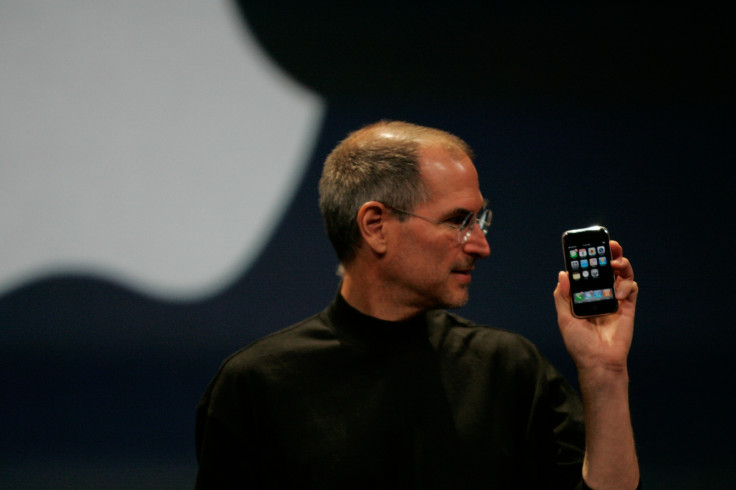Sleight of hand, white lies and a bottle of Scotch: How Apple pulled off the first iPhone launch
As the iPhone turns 10, we revisit how Steve Jobs and Apple managed to make a buggy iPhone look finished.

On 9 January 2007, Apple co-founder Steve Jobs took to the stage at the annual MacWorld event in front of 5,000 attendees to reveal the iPhone. Apple had been working on the handset in secret for two-and-a-half years, and such was the strength of its smoke-and-mirrors routine, engineers working on the hardware were kept separate from those designing the software. Hardly anyone know exactly what they were working on.
Jobs had originally intended the iPhone's large touchscreen and software to be used on a tablet first, but on seeing what his engineers had produced decided a smartphone was more important. Days before the event rumours began circling that Apple was working on a phone, but such was Jobs' control not a single image, sketch or screenshot leaked. It was a different world compared to the near-full picture the rumour mills produce ahead of most Apple launches today.
But Jobs' tight control over the iPhone's secrecy could not be matched by the design team's goal to have a fully working prototype on stage at MacWorld. Announced a full six months before going on sale (to avoid leaks via regulatory testing), the iPhone used by Jobs was barely functional.
Engineers found a "golden path" where all of the phone's key functions could be shown off without it crashing, but only in one specific order. Surf the web before sending an email instead of the other way around, for example, and the iPhone would crash. And Jobs would likely have someone fired.
A 2013 report by the New York Times Magazine, corroborated by The Internet History Podcast this week, revealed how the iPhone was so incredibly buggy that it was highly likely to crash during Jobs' one hour and 40 minutes on stage. Adding to the tension was Jobs' demand that a live stream of the demo iPhone was shown on a giant screen above the stage. This meant adding extra hardware to his iPhone and further complicating an already precarious situation.
The iPhone's Wi-Fi software was so unstable that extra antennas were attached by long cables running off stage so the wireless signal didn't have to travel as far. Additionally, to stop the thousands of audience members trying to connect to the same network, it was configured to look like a Japanese signal, where Wi-Fi frequencies not available in the US are used.
Jobs wanted to make a real phone call on stage, which meant network AT&T installing a portable cell tower on site. But even that wasn't enough for the Apple boss, so to make sure the phone's performance looked perfect the demo units were coded to display permanently five bars of signal coverage, regardless of how good their connection actually was.
The golden path
With just 128MB of memory (an iPhone 7 has 2GB, or 2,000MB) and running unfinished apps which were slow and bloated, the prototype iPhone was unlikely to make it through Jobs' demanding demo, where multiple features were used at once, in one piece.
Through trial and error, engineers came up with the golden path, where an iPhone would survive to the end of the demo without crashing, but only if everything was shown off in the right order. Tap the wrong app by mistake and the phone would freeze or switch off completely. Although it looks like Jobs is casually scrolling through the phone's functions, he is carefully demonstrating each for just a few seconds to avoid overworking the handset.
Several spare iPhones were also on stage, ready to take over if one crashed and needed to be reset. But for his final act Jobs wanted to play some music, take a call, put it on hold to take a second call, find and email a photo to the second caller, look up something online for the first caller, then return to his music. There was no room to switch to a second handset mid-demo; miraculously, the demo worked.
'We were in the fifth row doing shots of Scotch'
Senior Apple engineer Andy Grignon, who was in charge of all wireless features of the iPhone, including phone signal, Bluetooth and Wi-Fi, recalls how he and his colleagues got increasingly drunk during the presentation.
Speaking to the NY Times back in 2013, Grignon said: "And so there we were in the fifth row or something — engineers, managers, all of us — doing shots of Scotch after every segment of the demo. There were about five or six of us, and after each piece of the demo, the person who was responsible for that portion did a shot. When the finale came — and it worked along with everything before it, we all just drained the flask...We just spent the entire rest of the day drinking in the city. It was just a mess, but it was great."
© Copyright IBTimes 2025. All rights reserved.






















